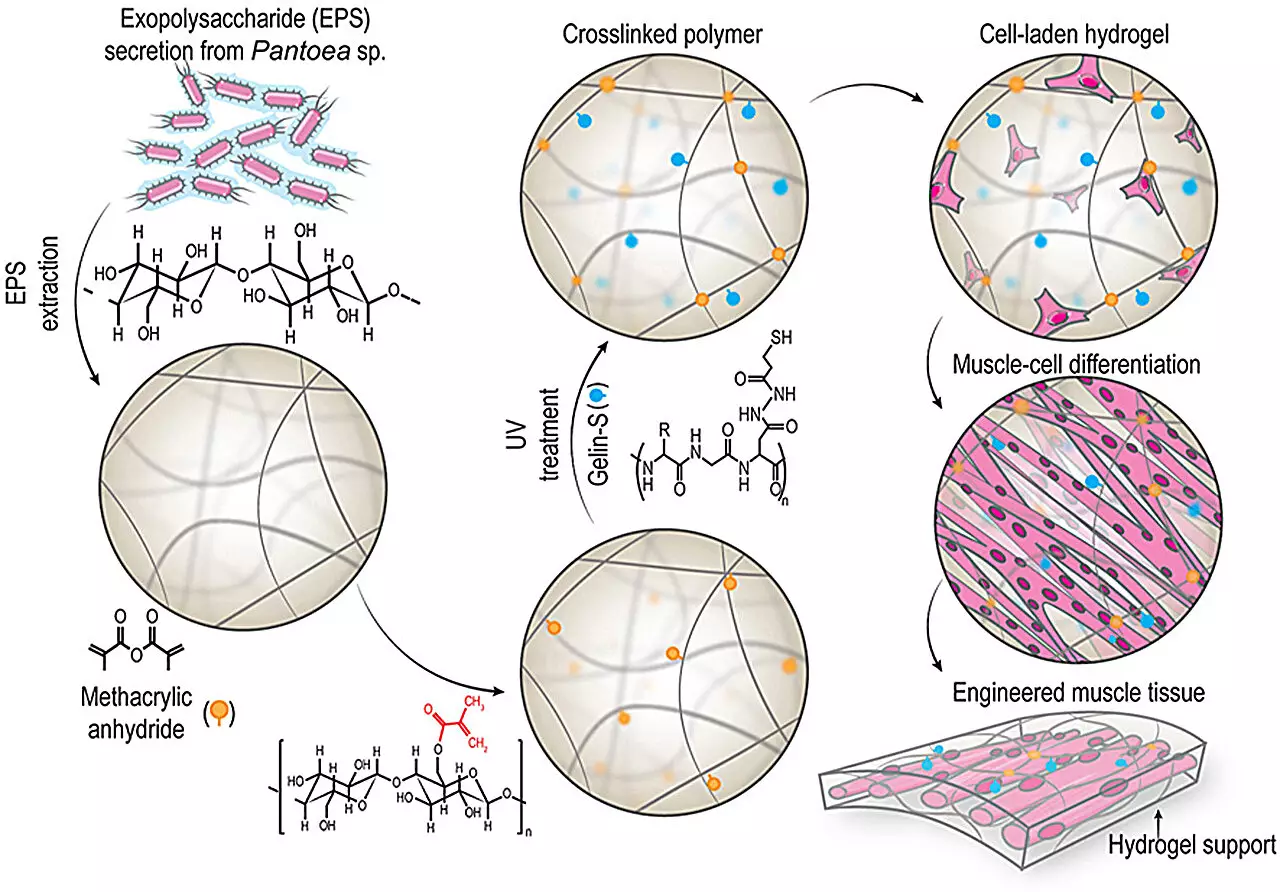Groundbreaking developments in tissue engineering have emerged from the Technical University of Denmark, spearheaded by a dedicated team under the leadership of Alireza Dolatshahi-Pirouz. The innovative approach employed by the researchers centers around the unique healing properties inherent in certain bacterial species. By leveraging the bacteria’s natural bioproduction capabilities, the team has successfully synthesized a novel biopolymer designated as Pantoan Methacrylate (PAMA). This cutting-edge material is notable for its application in creating a robust and elastic hydrogel, designed specifically to promote muscle regeneration.
The introduction of PAMA marks a significant advancement in regenerative medicine, particularly in addressing challenges related to muscle injuries. The proprietary hydrogel, often referred to as “bactogel,” has been subjected to rigorous in vivo testing. The results were promising, showcasing a marked enhancement in muscle tissue regeneration when applied to muscle injuries in rat models. The findings suggest that this bacterial derivative not only facilitates tissue formation but also minimizes the presence of fibrous tissue that typically complicates recovery processes.
According to Associate Professor Dolatshahi-Pirouz, this hydrogel presents a unique solution in the field, as it boasts exceptional mechanical properties that are often lacking in conventional bioactive hydrogels. The combination of good biocompatibility, mechanical resilience, and impressive healing capability positions PAMA as a potential game-changer in treating musculoskeletal injuries across a range of demographics, including athletes, elderly populations, and military personnel recovering from traumatic injuries.
The vision articulated by Dolatshahi-Pirouz extends beyond mere muscle regeneration. He posits a transformative future in which bacterial-derived polymers, or “bactomers,” could play a crucial role in regenerative medicine. The notion of utilizing live bacteria in so-called “regenerative bacto-baths” signifies a profound shift in how healing could be approached. Such a system could allow for on-demand secretion of therapeutic compounds to accelerate healing processes for damaged tissues.
By focusing on the remarkable abilities of bacteria to produce healing substances, the research team has opened doors to pioneering methodologies that could redefine rehabilitation and recovery. Future studies are expected to explore the synergistic potential of PAMA when combined with muscle progenitor or stem cells, which could further enhance its regenerative capabilities.
The research accomplishments at the Technical University of Denmark underline a pivotal moment in the evolution of regenerative medicine. The development of PAMA and its application in the form of the PAMA bactogel heralds a new era where the healing powers of bacteria can be harnessed for human benefit. As we examine the limitations of traditional healing methods, it becomes evident that innovations inspired by nature hold the key to progress. The potential impact of these findings could reverberate throughout various fields, fundamentally changing how we approach tissue repair and recovery in the years ahead.

